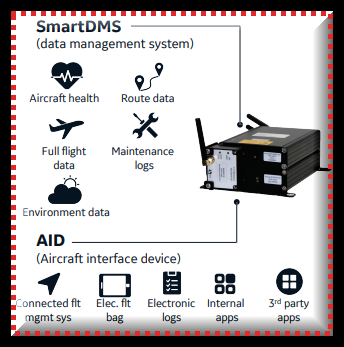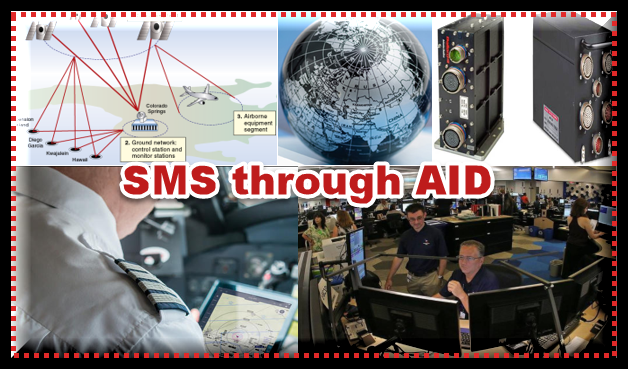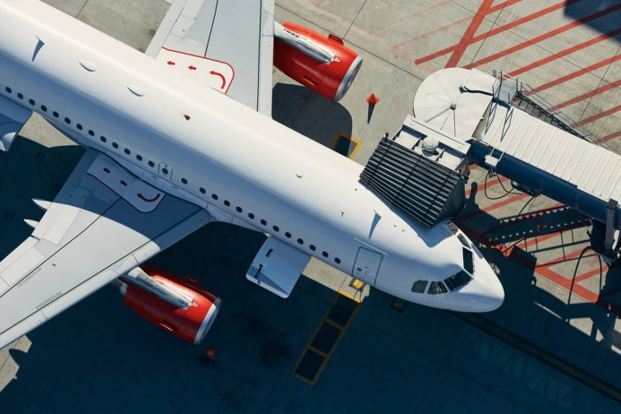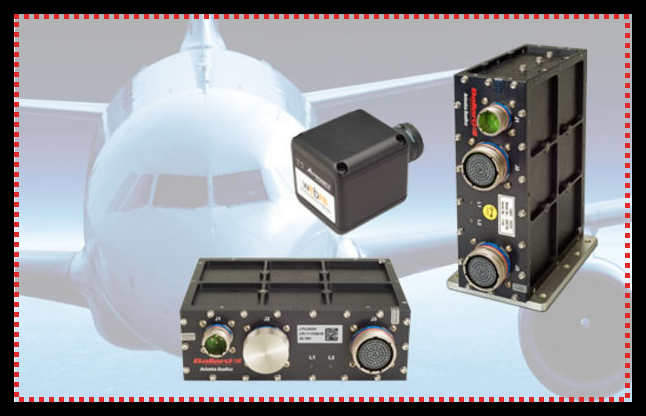Aircraft Information Systems as a Powerful SMS tool

Connected Aviation Today, see below, has published a most informative and extensive article about aviation’s equivalent of the well-known Internet Service Provider, which is known as THE AIRCRAFT INTERFACE DEVICE (AID). CAT’s Baumgarten analyzes its applicability to SAFETY, SUSTAINABILITY, and MAINTENANCE. His assessment of its SAFETY VALUE delves mostly in real time terms. The capacity of AID for Safety Management Systems analysis is understated. So, too, with these AID suppliers:



Their descriptions of their respective systems focus on items that sell their products, that the purchasing agents can easily quantify for the cost/benefit test that is a predicate to a buy decision.
Consider, for example, AID messages to a number of airlines that:
- GPS signals are erratic on Flight I on Airline A (not a route to be repeated for 3-5 days for this carrier), then B’s Flight 2 registers the same abnormality à FLIGHT SAFETY FOUNDATION’S GLOBAL SAFETY INFORMATION’s central SMS (GSIP) à global safety warning issued, and Flight 3 avoids the ATC risk.
- Scheduled flight leaves after service by new deicing system, even after extensive testing, and hypothetically, this airport experiences a rapid change in temperature from below 00 to above freezing. The flight experiences intense mixed clear and rime icing conditions which overwhelm the capacity of the deicing solvent. AID automatically sends a message about the problem so that the carrier is aware of a problem, its SMS team researches the issue and recommends a procedure to remedy the issue.
- Recently promoted PICs incur similar approach problems into an airport adjoining a large body of water and experience spatial reference problems. AID’s recording sends error messages for this issue. The carrier’s SMS team recognizes a need for improved training. However, the spatial disorientation continues, the pilot class’s schedules revised to avoid the risk, and the SMS identifies possible eyesight issues (poor night vision, myopia…). Further research leads to special optical devices to correct for young and older pilots.
AID could be a significant tool in the SMS crusade to enhance safety in so many human, operational, equipment and other risk variables!!! All in the SMS Aviation Network should assure that AID is an essential element of your process and that your system is attune to the immediacy of this powerful data.

+++++++++++++++++++++
The Incredible, Connectable AID and Its Future in Aviation
May 8, 2024


Everyone who has home Internet from one of their local Internet Service Providers (ISPs) has a box somewhere within their home –– that connects disparate devices to the Internet. These wireless—or wired—routers are connection hubs that manage traffic and data and ensure that devices can receive and send data outside the local network.
As digital services and connectivity have become essential to everyday life, these routers have become a central enablement tool in our lives.
The advanced capabilities and functionality that come with connectivity are also in high demand on the go. This is why we’re seeing the emergence of automobiles that act as Wi-Fi hotspots. It’s also why the AIRCRAFT INTERFACE DEVICE (AID) is a growing trend in commercial aviation.

Meet the AID
The primary purpose of the AID is to aggregate information from the aircraft’s systems and make that data easily consumable by applications. Once that information is aggregated, it can be made available to users that need it. The AID pushes this data to where it’s needed while simultaneously providing communication channels for the aircraft and its crew.
Essentially, the AID functions much like the router in your home, coupled with a firewall for protection. Once installed on the aircraft, it interfaces with its systems and provides information to users, whether it’s the FLIGHT CREW OR CABIN CREW. It also functions to send aircraft data to those who may need it ON THE GROUND.
THE AID CAN MAKE DISPATCHERS AND AIRLINE OPERATIONS PROFESSIONALS MORE AWARE OF WHAT’S HAPPENING WITH THE AIRCRAFT AND ENABLE THEM TO STREAMLINE AND OPTIMIZE OPERATIONS.
As the tool that enables aircraft connectivity, the AID benefits practically every stakeholder in the larger aviation ecosystem. Therefore, the AID makes many of the benefits that have been attributed to a more connected aviation ecosystem possible.
To think of it another way, the AID is to the airline’s data landscape what the opposable thumb was to the evolution of our ancestors. It enables the airline to get to grips with a vast range of data and how to use them most effectively.
Safety, sustainability, and maintenance
The AID provides several benefits. It plays a vital role in REDUCING AIRFIELD INCURSIONS. It does this by providing incredibly accurate location information for the flight crew. The AID enables the same GPS signal and position information the aircraft uses to be sent to the Electronic Flight Bag (EFB) used by pilots. This allows flight crews to see their precise location on moving maps, giving them the situational awareness to more safely navigate even the most complex and bustling airports under adverse conditions such as dense fog.
Flight safety departments can also use flight information from the AID to increase safety in other ways. Is there A HISTORY OF UNSTABLE APPROACHES in one particular airport? What caused that? The data captured and distributed by the AID can help identify the problem, find the source of the problem, and make changes that can make everyone safer.

The AID also offers efficiency and sustainability benefits. Increased situational awareness allows pilots to visualize and follow their taxi paths more accurately. Inefficient taxi paths waste both time and fuel, so making them more efficient helps to increase the airline’s operational efficiency while also saving money and reducing carbon emissions. {STET: TAXI PATHS selection is an ATC authority}
Inefficient taxi paths are one problem facing airlines, but they’re far less impactful than flying inefficient flight paths. Luckily, the AID also enables solutions like Collins Aerospace’s Flight Profile Optimization (FPO), which can evaluate potential flight paths based on real-time data sources like weather and airspace restrictions, and recommend more efficient flight paths to the pilot via their EFB. {NOTE: pilots may request flight paths, but ATC can grant or deny based on its judgment of safety and efficiency.}
These more efficient flight paths can lead to significant cost savings. They also reduce the impact of carbon emissions as well as expedite flights, benefiting airlines and passengers.
THE AID…PLAYS A VITAL ROLE IN REDUCING AIRFIELD INCURSIONS…[AND] ALLOWS FLIGHT CREWS TO SEE THEIR PRECISE LOCATION ON MOVING MAPS, GIVING THEM THE SITUATIONAL AWARENESS TO MORE SAFELY NAVIGATE EVEN THE MOST COMPLEX AND BUSTLING AIRPORTS UNDER ADVERSE CONDITIONS…

Finally, the AID can make it possible to get SYSTEMS DATA OFF OF THE AIRCRAFT – which opens the doors to many of the ADVANCED AND PROACTIVE MAINTENANCE CAPABILITIES that airlines seek to implement. By enabling aircraft maintenance crews to access and analyze aircraft system data while the plane is still in flight, they can proactively identify the source of an issue before it becomes a problem.
Having a team ready and waiting to perform necessary repairs when the aircraft lands allows them to replace parts nearing end-of-life before they cause problems, and the aircraft needs to be taken out of service.
Operational efficiency and customer experience
The AID delivers benefits that don’t involve sustainability, flight safety, or aircraft maintenance. These include helping to turn flights around faster, decreasing delays, and even improving the travel experience by helping understand and address passenger feedback in real-time.
The AID can make dispatchers and airline operations PROFESSIONALS MORE AWARE OF WHAT’S HAPPENING WITH THE AIRCRAFT and enable them to streamline and optimize operations. For example, the AID can share the exact aircraft location, allowing dispatch and operations teams to know precisely when it will land, where it is on the ground, and when it will arrive at a gate. This can ensure that the necessary crew and personnel are ready and waiting to get passengers and baggage off the aircraft, which expedites disembarking.
From there, operations professionals can begin to see exactly what has been done to the aircraft to prepare it for its next flight. Has fuel been loaded? Are the cargo doors closed, indicating that baggage has been loaded onto the aircraft? Giving dispatchers and operations professionals access to this information in real-time can reduce aircraft turnaround times, decrease delays, and increase efficiency.
Dispatchers can use this information to enable more data-driven decision-making while the aircraft is in flight. For example, let’s say the aircraft needs to be diverted from its predetermined flight path. The dispatcher can reference the amount of fuel still available on the aircraft and make better, more informed decisions about how much longer that aircraft can fly and where it should be diverted to
Real-time Response
Social media discussions and discourse can have a significant impact on an airline’s reputation. Many passengers go to social media first when they’re unhappy with their air travel – posting videos and status updates about the delays they’re experiencing, the problems they’re having on their flights, or the lack of transparency they’re getting into flight cancellations.
Unfortunately, airline personnel who see complaints often have little or no visibility into what’s happening on a particular flight or at a specific airport. This makes it challenging to digest complaints online and take appropriate action to remedy the real-life situation in a timely manner. However, the AID can help.
…THE AID FUNCTIONS MUCH LIKE THE ROUTER IN YOUR HOME…ONCE INSTALLED ON THE AIRCRAFT, IT INTERFACES WITH ITS SYSTEMS AND PROVIDES INFORMATION TO USERS, WHETHER IT’S THE FLIGHT CREW OR CABIN CREW.
I’ve heard stories about airlines fielding social media complaints about cabin temperature, of all things. Apparently, these passengers are sitting on flights with cabin temperatures set too low and turning to Facebook, Instagram, or X to discuss how that particular airline doesn’t care about its passengers’ comfort.
With the AID making it possible for personnel on the ground to monitor aircraft systems in flight, there is now a way for these social media complaints to not just get heard but corrected while the flight is still in the air. Personnel who see the airline’s social media handles referenced online can now check to see what’s going on with the flight and reach out to the flight crew to make changes in real-time.
Today, it’s no longer acceptable to only have resilient, high-bandwidth connectivity in our homes. Connected aircraft are revolutionizing the aviation industry, and the AID is essential in making that connected aircraft a reality.
In my next article on Connected Aviation Today, I’ll examine the future of AID and the benefits that a smarter, more capable AID will deliver to airlines.

++++++++++++++++++++